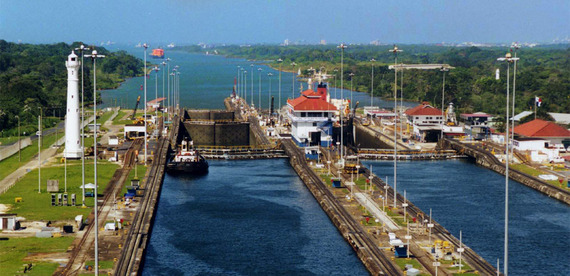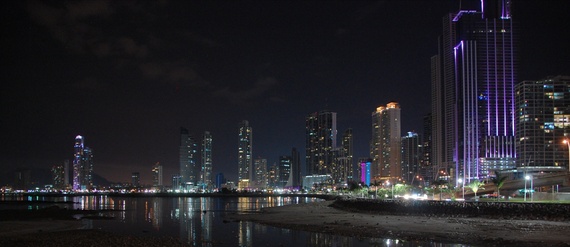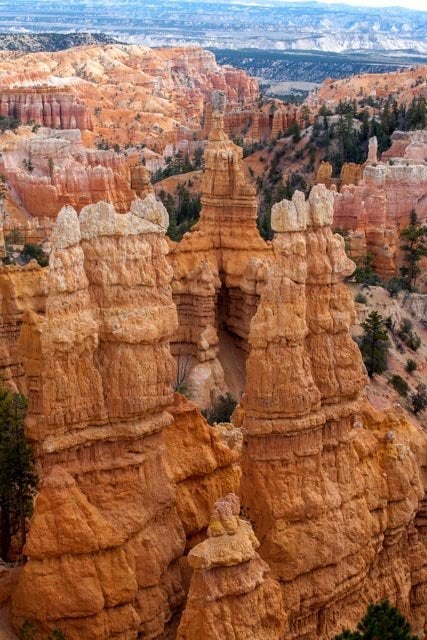The New Panama Canal
If you're wondering where the cash comes from to fund the seemingly boundless public works projects in the works here in Panama, look no further than the sliver of water that bisects the isthmus just west of Panama City ... the Panama Canal.
The sliver is a little bigger now and was the scene of quite a to-do the weekend of June 26 to celebrate that fact. A crowd estimated at 25,000 gathered near the Agua Clara locks on the Atlantic side of the Canal waving Panamanian flags and cheering in the tropical sun as the first supersized vessel made the transit from one ocean to the other.
Among those attending the ceremonies were jubilant Panamanians, Canal employees, dignitaries from around the world, shipping and trade executives, and hundreds of journalists. They celebrated the first expansion of the waterway since its original construction in the early 1900s.
The US$5.4 billion expansion, initiated in 2007, allows much larger ships to make the 50-mile trip from ocean to ocean. Previously the maximum size of the ship that could make the passage, known in shipping circles as Panamax, was limited by the size of the Canal's locks and the depth of the water. Building the new locks allows for so-called neo-Panamax ships with a capacity nearly three times (14,000 containers instead of just 5,000) that of Panamax ships to travel the Canal.
Each container ship passing through the Canal pays a toll based on the ship's capacity, expressed in what are called 20-foot equivalents, or TEUs. A TEU is basically the size of standard shipping container. That toll is now about US$90 per TEU.
The first vessel to transit the new locks was the Chinese COSCO Shipping Panama, which set sail from Piraeus on June 11 carrying 9,472 TEUs and measuring just under 300 meters (about 1,000 feet) in length. Assuming its owners didn't get a discount for being on display for the crowds, it paid a toll in the range of US$850,000.
Canal officials said they have 170 reservations from neo-Panamax ships to make the trip during the next three months. By 2021, the Panama Canal Authority (known by its Spanish acronym ACP) is hoping the project will bring in US$2.1 billion per year in revenue on top of what it was making before the expansion, a figure that would represent 2.8 percent of Panama's gross domestic product. The ACP is already eyeing the prospect of adding a fourth set of locks to lure even bigger ships that can now only travel through the Suez Canal.
Excitement about the Canal expansion has been rippling across the hemisphere for years. Ports on the United States' East Coast and Gulf of Mexico have been racing to expand and make room for larger vessels and more cargo going to and from the Far East -- cargo that previously had to dock on the West Coast because of the Canal's previous limitations. American coal and grain exporters are salivating about easier and cheaper access to markets in China and elsewhere in Asia.
Work on expanding the Canal was initially scheduled to be completed in October 2014. Billions of dollars in cost overruns and delays pushed that back to April 2016, then again to this month. But the work finally got done. And that's the point at this point.
The expanded Canal is the main reason economic prognosticators see a good year, and years, ahead for Panama. The Canal previously accounted for about 15 percent of the country's GDP, so doubling its capacity makes for some compelling math and easily leads one to conclude that the country's prospects remain bright for the foreseeable future.
It's not only the Panamanian government that stands to benefit from the Canal expansion. The private sector is stepping up in a big way, as well, and much of the activity centers around the Pacific entrance to the Canal just outside Panama City. A new container terminal at Corozal is planned within two years and has generated interest from 13 of the world's largest port operators. Meantime, development at the Panama Pacifico Special Economic Area continues impressively.
The wide range of new initiatives around the Canal demonstrates that the Panamanians are aware that the best way to take advantage of the expanded Canal is to build around it. The Panama Canal is not just about ships coming and going; it's about ancillary services, and more companies are realizing all the time that Panama is an attractive location for an Americas hub.
The expansion has already bolstered Panama's efforts to become the Singapore, or maybe Dubai, of Central America. It also promises to help to transform the role that Panama is playing for many U.S. and other foreign firms doing business in Central and South America. And everyone in the country stands to benefit from that.
Kathleen Peddicord
Original feature: Here's Why The Panama Canal Expansion Has Everyone Excited
Related Articles:
Earlier on Huff/Post50:




